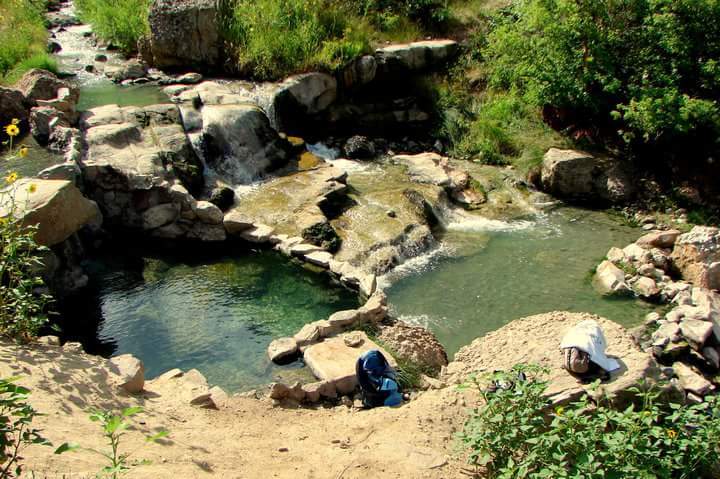Diamond Fork Hot Pots EarthCache
-
Difficulty:
-

-
Terrain:
-

Size:  (other)
(other)
Please note Use of geocaching.com services is subject to the terms and conditions
in our disclaimer.
Welcome to the Diamond Fork Hot Pots
AKA: Fifth Water
The hike to the springs is approx 2.5 miles and the climb has a moderate elevation gain.

Hot springs are defined as springs of water with the water in them at a higher temperature than in the surroundings. The temperature of the hot springs is higher because of the internal heat of the earth's crust, known as the geothermal energy. The water sources itself from the interior of the earth and then vents itself out of the earth's crust. When the water comes out on the surface, it still remains hot with steam emanating from it. This steam is a significant aspect of hot springs. In some areas, only the steam comes out of fissures in the earth's crust, which is because all the water gets heated into steam before it reaches out of the earth's crust. Such a geological feature is known as a fumarole. Another formation is possible when the fissure is too tiny, which causes the hot water to force itself out with force from the fissure. Such water can reach commendable height. These are known as geysers. Geysers and hot springs are often confused with each other actually. It must be remembered that hot springs flow on the earth's surface, while the geysers are pushed out to a great height from the earth's crust. Actually, geysers are a form of hot springs; but when all geysers are hot springs, all hot springs are not geysers.
Hot springs are formed when water, heated due to the geothermal energy, comes up to the surface of the earth. This can happen in several ways. But it must basically be remembered that the interior of the earth is still quite hot. This is evident when the magma from the interior of the earth flows out through a crater during a volcano. The interior of the earth has both hot rocky material as well as molten material, such as that present in the magma. Sometimes the water comes in contact with these hot materials in the interior of the earth, either hot rocks or the magma itself, and then seeps out onto the surface of the earth. Since the heat present in the crust of the earth is very high, the water heated inside the earth does not dissipate its heat even on percolating out of the earth's crust. Thus, the hot springs can be caused in both volcanic and non volcanic areas of the world. In the volcanic areas, the magma is responsible for the hot spring, while in the non volcanic areas, the hot rocks present inside the earth's crust are responsible. But it is evident that the hot springs present in the volcanic areas of the world are much hotter than those present in the non volcanic areas, with their temperatures sometimes reaching boiling points.
To log this EarthCache you will need to bring a special tool with you. A thermometer. You will also need to answer the following questions:
1: From the coords, How many places does the hot water flow from the ground?
2: Using the thermometer or give me your best estimate and take the water temp at one of the locations and from the pools they flow into.
3: The rocks in the stream are White. Tell me what eliment makes them white.
4: Not using your eyes, What other sense can you use to determine what the eliment is in the Water.
Bonus: Photos of your group are always fun to see.
| I have earned GSA's highest level: |
 |
Additional Hints
(No hints available.)